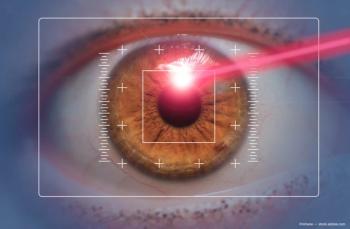
IRIDEX consensus paper investigates best practices for MicroPulse transscleral therapy for glaucoma
Robert J. Noecker, MD, MBA, discusses the IRIDEX consensus paper regarding MicroPulse transscleral therapy for glaucoma at AAO 2021.
At the 2021 American Academy of Ophthalmology annual meeting, Robert J. Noecker, MD, MBA; Director of glaucoma, Ophthalmic Consultants of Connecticut, assistant clinical professor, Yale School of Medicine and clinical professor, Quinnipiac University School of Medicine; spoke with the Ophthalmology Times team about the IRIDEX consensus paper. This paper tackles the best practices and treatment settings for the IRIDEX MicroPulse transscleral therapy for glaucoma.
Video transcript
Robert J. Noecker, MD, MBA: All right. So I was honored to be a member of this consensus panel looking at MicroPulse treatment for glaucoma. And it was a consensus panel where we did a delphi method of coming to kind of best practices around treatment settings for the IRIDEX MicroPulse transscleral therapy for glaucoma. And some of the takeaway points were, in terms of the treatment parameters, is slowing down sweep speed.
So this concept of fluence which is most influenced in this treatment by sweep speed. So how quickly we move the laser probe during therapy really was one of the biggest drivers when we determine what the best way to treat or what's the best way to influence the amount of energy delivered for the therapy.
So also, we discussed optimal power settings on the laser as well as total treatment time.
So as initial settings what the consensus panel came to the best settings use or 2.5 watts, for at a sweep speed of 20 seconds per sweep. And then 80 seconds per hemisphere for a total treatment time 160 seconds. So we sweep back and forth in one hemisphere 20 seconds, go back, do that four times and then go around the top.
And that way when we do this transscleral treatment for lowering eye pressure, we found that the side effect profile was very minimal. Many of the treating experts often don't see the patients for the first post-op week, it is a very safe therapy. Patients can really resume their lifestyles very quickly.
Also, the efficacy was maintained. So we found that the best efficacy—because historically with, with MicroPulse therapy, many early users were probably under treating a bit and that would sacrifice efficacy as well. So we found that the power settings of 2.5 watts with the slower sweep speed, both increasing total energy as well as the fluid supplied to the eye really resulted in optimal and results with this therapy.
So what this means ultimately for patients going forward is I think it really expands the range of therapy that we can use MicroPulse transscleral treatment. It gives us confidence to get good efficacy in patients with more advanced disease, where the most important thing, high pressures—we really need to lower the pressures down into the normal range again and try to reduce some of their medication load—but also in the earlier patients where they may be on a few medications but not having problems with tolerability or acquisition, but not like crazy high pressures. We can lower intraocular pressures down but also more importantly in that group, get them off of eyedrops.
So it's really expanded the utility of MicroPulse transscleral therapy for the treatment of glaucoma.
The American Academy of Ophthalmology (AAO) annual meeting was held November 12 to 15 at the Ernest N. Morial Convention Center in New Orleans, Louisiana. The event included Subspecialty Days and a virtual component for remote participation.
Newsletter
Don’t miss out—get Ophthalmology Times updates on the latest clinical advancements and expert interviews, straight to your inbox.








































